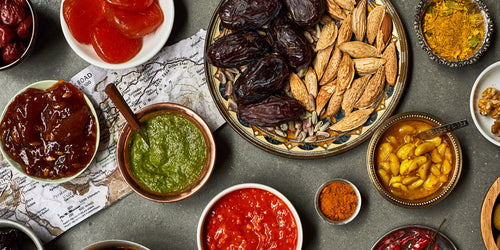Your Cart is Empty
Pierre Thiam wasn’t looking to get into the grain business, but he had a problem. While writing two African cookbooks—Yolélé and Senegal—the Dakar-born chef couldn’t find consistent sources for American readers to buy the fonio he used in his recipes. Fonio is to West Africa what quinoa is to the Andes: an indigenous grain steeped in ancient history, essential to the culinary story of the region. Excluding it from a collection of Senegalese dishes just wasn’t an option.
Neither was leaving his fanbase high and dry. After all, he suggests, if people knew what fonio was, they’d line up down the block for it.
“I’d been living in New York for almost three decades,” he says, “and I could see a growing consumer awareness. People want more control over the food they’re eating and more access to high quality, nutritious products.” Gluten free fonio, with its naturally high protein count, low glycemic index, and nutty, earthy flavor, is just waiting to be scooped into grain bowls at a salad bar.
Conversations in West Africa led to more in the U.S., and in 2017—just two years after his second cookbook hit store shelves—Yolélé Foods was born. Since then, the grain has been a hit at the Whole Foods stores that carry Yolélé pouches. It’s the centerpiece of Thiam’s new fast-casual restaurant in Harlem, Teranga. We can barely keep the stuff in stock here at Snuk.
Fonio grains look like tiny specks of couscous, and they cook about the same way, which is to say easily. Toss the fonio with a drizzle oil oil in a pot. Add water and bring it up to a boil, then take the pot off the heat and let the grains steam for five minutes. From there you can fluff and serve just like couscous, add some milk and cinnamon for a quick breakfast hot cereal, or toss the grains with other ingredients for a salad.

But for Thiam, a chef who’s devoted his career to African food and the welfare of the Africans that cook it, filling American bowls with tasty fonio is only one part of the mission. Equally important is building a whole new supply chain for West African smallholder farmers direct to the Western consumer, so the latter’s wealth can be invested to help improve the lives of the former. “I knew there was a way to create income for farming communities with a better market,” Thiam says.
Rural communities in the hot, dry Sahel, a continent-spanning band of Africa between its northern Sahara desert and its central tropical zone, are among the most vulnerable in the wake of centuries of colonial predation, and the region’s arid soil isn’t conducive to growing many staple crops, leading locals to rely on costly imports like rice for their daily necessities.
That’s where fonio comes in. Though the grain has developed a reputation among recent generations as poor man’s country food, it’s essentially a miracle crop. Fonio thrives in poor soil where other plants wither, and it even helps regenerate growing fields. It matures in just two to three months, which means fast returns for farmers, and requires minimal intervention along the way. No wonder it was a celebrated food among ancient African civilizations, and there’s no small irony that the crop has fallen out of favor among farmers in place of rice and millet: non-native foods that command a higher market price but take poorly to local farmland.

Yolélé works with non-governmental organizations like SOS Sahel that are already supplying farmers with fonio and the training to turn it into an independent agricultural business. Much of this farming is organic in all but official certification, so the company’s challenges are mainly logistical: ensuring consistent supply of well processed fonio from a host of small cooperatives, and maintaining a level of quality necessary for the Western market. Thiam is particularly proud of Yolélé’s relationship with Aya Ndiaye, a 62-year-old Senegalese farmer who leads one of the country’s most innovative fonio cooperatives.
Like most fonio producers, Ndiaye relies on labor-intensive manual methods to process the grain after harvest, but she’s a true believer in the crop’s potential to improve rural African economies.

With a foundational supply chain under his belt, Thiam and the Yolélé crew are now focusing on technological advances that’ll both reduce the manual labor required to process fonio and increase its value right at the source. That includes a mill for grinding fonio flour, a boon for the booming gluten free market and a necessary step for developing revenue-boosting snack foods.
Thiam describes Yolélé as a “purpose-driven” company, and on its face it’s easy to view the business as a prosocial development project aimed at generating wealth for disadvantaged communities. But there’s another investment going on here: in Africa’s legacy as a heartland of flavor, with a history all its own and stories to be told out of pride, not charity. “When my first cookbook came out [in 2008],” Thiam says, “journalists were amazed because they couldn’t connect Africa with an abundance of food and tradition. The narrative was that people are starving and we need to help them.”
11 years later, attitudes are changing. “Being an African company is one of the things that gets us through the door.”
Start cooking with fonio
Stock up on gluten free fonio, then give these recipes a spin.
Recipe: Creamy Fonio Hot Cereal with Dried Fruit
Recipe: Fonio Almond Mango Crisp
Recipe: Fonio Frittata with Butternut Squash, Spinach, and Tomato
Lead image: Evan Sung





